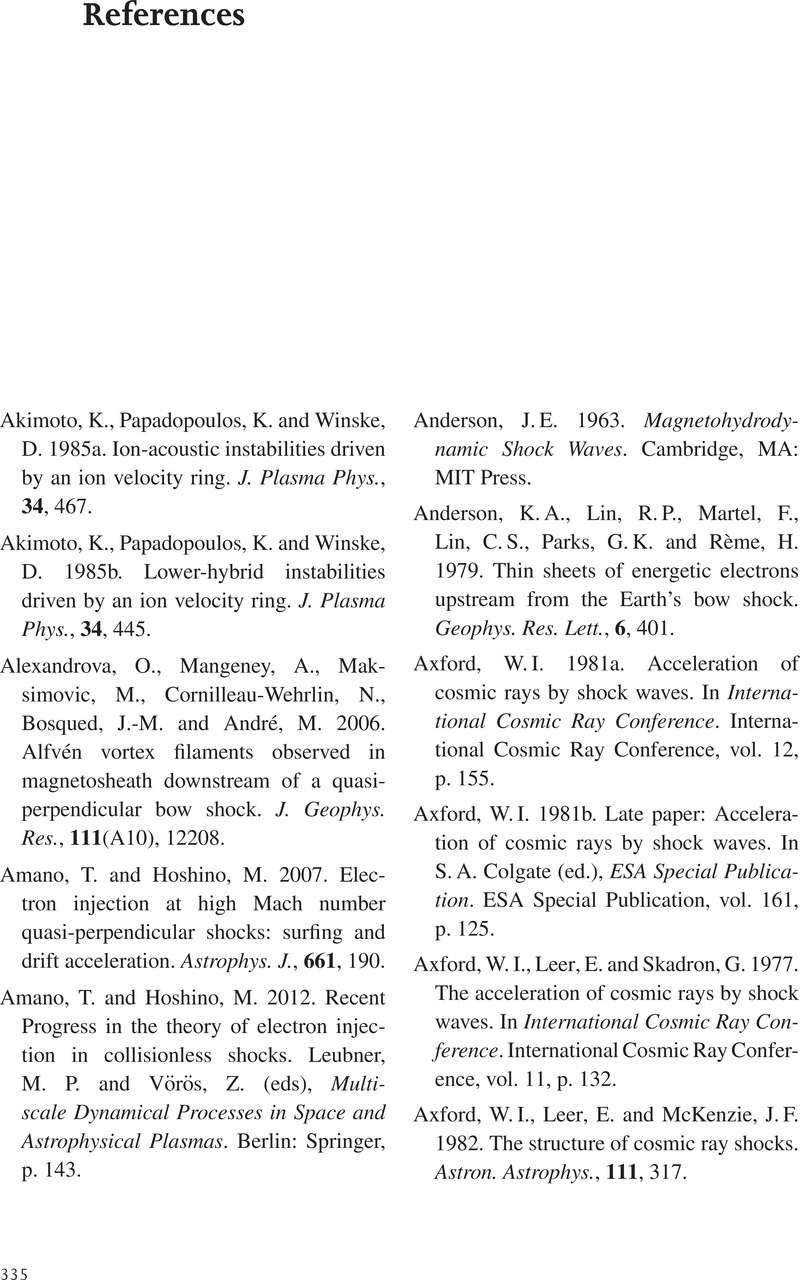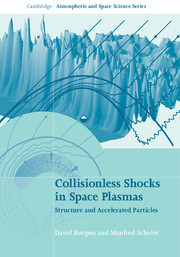Book contents
- Frontmatter
- Contents
- Preface
- Chapter 1 Shocks
- Chapter 2 Basic concepts
- Chapter 3 The quasi-perpendicular shock: macrostructure
- Chapter 4 The quasi-perpendicular shock: microstructure
- Chapter 5 The quasi-parallel shock
- Chapter 6 Diffusive shock acceleration
- Chapter 7 Coherent shock acceleration
- Chapter 8 Electron acceleration
- Chapter 9 Global and modified shocks
- Appendix Simulation techniques
- References
- Further reading
- Index
- References
References
Published online by Cambridge University Press: 05 August 2015
- Frontmatter
- Contents
- Preface
- Chapter 1 Shocks
- Chapter 2 Basic concepts
- Chapter 3 The quasi-perpendicular shock: macrostructure
- Chapter 4 The quasi-perpendicular shock: microstructure
- Chapter 5 The quasi-parallel shock
- Chapter 6 Diffusive shock acceleration
- Chapter 7 Coherent shock acceleration
- Chapter 8 Electron acceleration
- Chapter 9 Global and modified shocks
- Appendix Simulation techniques
- References
- Further reading
- Index
- References
Summary

- Type
- Chapter
- Information
- Collisionless Shocks in Space PlasmasStructure and Accelerated Particles, pp. 335 - 352Publisher: Cambridge University PressPrint publication year: 2015

